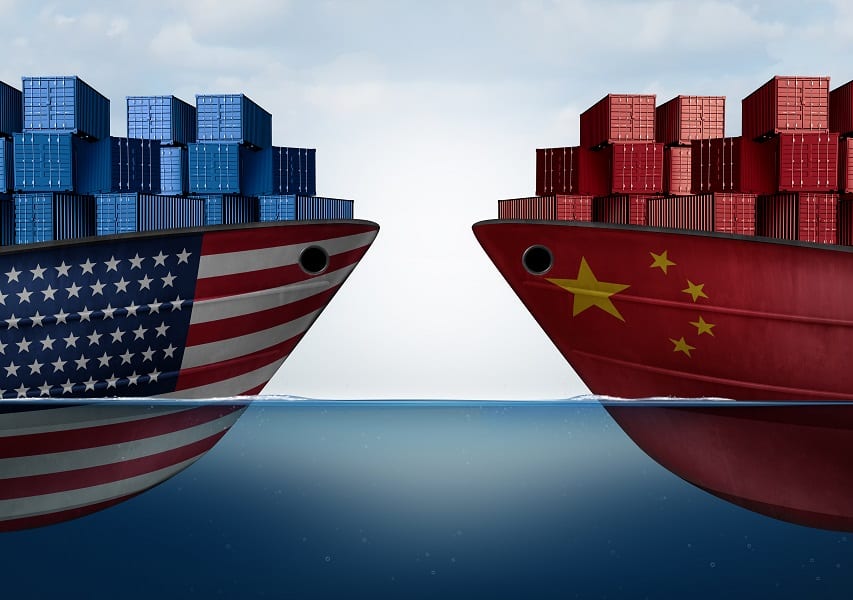What Can Manufacturers Expect from the Next Presidential Administration?
Political Divide May Stall Significant Tax, Economic Proposals
The 2020 presidential campaign was unusual in many ways, from socially distanced conventions to political rallies at drive-in theaters where attendees stayed in their cars.
For American manufacturers, one thing stood out about the campaign: the lack of focus on problems faced by the manufacturing industries.
Polls showed nearly 9 out of 10 voters said the economy was very important to them, and about the same percentage said manufacturing was critical to the national economy. So, the lack of campaign substance was notable, and many manufacturers hope their challenges will be a bigger priority for the incoming administration than they appeared to be leading up to the election.
One thing is certain. With razor thin margins between the two major parties in both houses of Congress, it could be politically difficult for President-elect Joseph R. Biden Jr. to achieve his tax and economic policy plans, including a proposed hike in corporate tax rates.
Top three challenges
#1 – Tarriffs
Tariffs – and the threat of new tariffs – combined with the trade war with China constitute the largest threat for most American manufacturers. Many manufacturers in Kansas, Arkansas, and throughout the Midwest import at least some of their raw materials and parts from China. The uncertainty of trade with China during President Trump’s administration – specifically, not knowing what tariffs might be imposed and on what goods at any given time – compelled many companies to delay making decisions. Disruptions in the supply chain during 2020 due to the COVID-19 pandemic have complicated the issue and left some manufacturers short of raw materials and parts they need to produce their goods.
Whether President-elect Biden will keep the current tariffs in place or roll them back is unclear, but he generally favors working more collaboratively with U.S. allies to confront China. So, while tariffs imposed on goods from China may stay in place, it’s possible that the Biden administration will ease up on tariffs that have been imposed on America’s traditional allies in the past four years.

#2 – Infrastructure
The second major challenge faced by manufacturers is lack of investment in the infrastructure needed to move raw materials and get goods to market efficiently. Estimates of the amount needed to improve U.S. roads, bridges, railways, waterways, ports, airports and utilities range from $2 trillion to more than $4 trillion. Yet, while the U.S. House of Representatives approved a $1.5 trillion infrastructure package this year, it is still held up in the U.S. Senate and unlikely to see action before the end of the 116th Congress.
#3 – Workforce
The third major challenge to manufacturers is a nationwide labor shortage. Nearly one-fourth of the U.S. manufacturing labor base is over age 55, and the rapid retirements of Baby Boomer workers have drained industry of expertise and raw numbers of workers, according to the U.S. Census Bureau. Many industries are investing in apprenticeship programs and post-secondary vocational and technical education, but the labor shortage persists.
Biden’s campaign platform calls for more investment in workforce training and focuses heavily on union workers, but political tensions and the costs of the continuing COVID-19 crisis may impact that goal.
Focus on reshoring
During the presidential campaign, Biden focused on “reshoring” – bringing supply chain sources back to the U.S. His platform calls for tax incentives for companies that bring such operations and jobs back, as well as a hefty 30.8% tax penalty for companies that offshore their production while selling finished goods back to the U.S.
He also advocates for a 10% advanceable tax credit for costs of creating domestic manufacturing jobs or modernizing U.S. manufacturing facilities.
Biden’s campaign platform called for $400 billion in federal procurement of products, materials and services made in the U.S., part of the largest public investment in procurement, infrastructure, and research & development since World War II.
Possible corporate tax rate boost
The key part of Biden’s campaign platform that manufacturers and other businesses are concerned about is the president-elect’s call for a higher corporate tax rate.
The Tax Cuts and Jobs Act of 2017 brought the top corporate tax rate of 35% down to 21%, placing the effective U.S. rate below the average for other member countries in the Organisation for Economic Cooperation and Development (OECD). Biden’s plan would push the corporate tax rate up to 28%.
With the very close split of Republicans and Democrats in each house of Congress, achieving that tax hike and other parts of the Biden economic plan could be difficult or impossible. But this is a good time for business owners in all industries to evaluate the impact of potential tax increases on their operations and profitability and take measures to mitigate any negative effects.
Contact your Adams Brown advisor for help in assessing the best path forward for your company as we head into a new presidential administration.
for help in assessing the best path forward for your company as we head into a new presidential administration.

